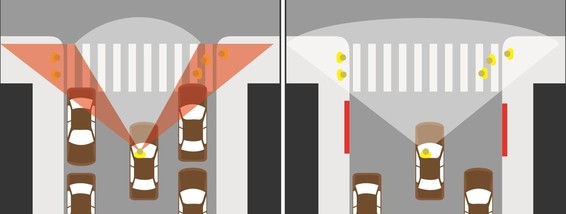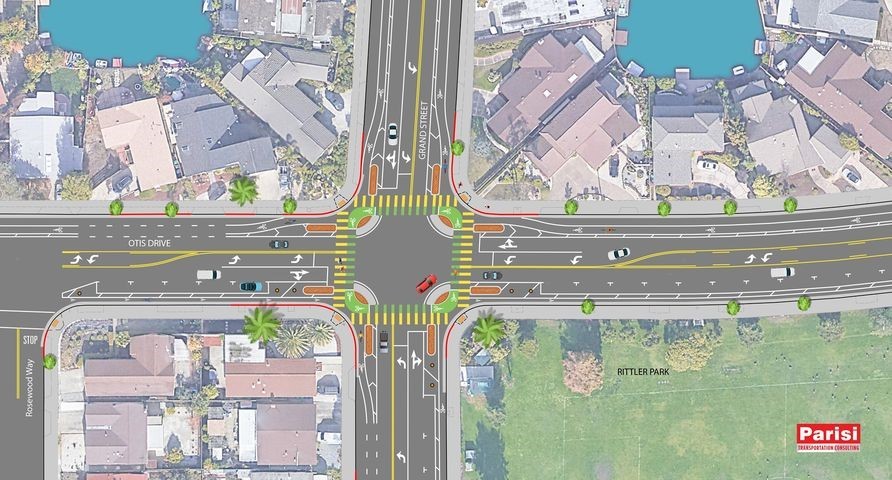|
The City of Alameda has compiled its 2020 fatal and injury crash numbers, and continues to work on making our streets safer. This Vision Zero update contains the following:
Join Mayor Marilyn Ezzy Ashcraft this Friday, February 5, noon-1:00 pm, at her Mayor’s Town Hall focusing on Vision Zero. Hear about the City's efforts to reduce traffic deaths and life-changing injuries to zero, as well as current and future traffic safety construction projects.
In 2020, four people tragically lost their lives and five were severely injured on Alameda streets. While this represents an increase in fatalities over 2019, our numbers are low enough, thankfully, that it would take several years to identify a true trend. The table below shows 2019 and 2020 numbers compared to the average from 2009-2018. (Please note that we found an error in in our previously reported data saying that Alameda has an average of one traffic fatality per year; the correct number is two. We updated the Vision Zero Crash Analysis to reflect this fact.)
| Severity |
Average 2008-2019 |
2019 |
2020 |
| Killed |
2 |
1 |
4 |
| Severely injured |
10 |
6 |
5 |
| All injuries |
221 |
273 |
167 |
For a table showing this data broken down by mode, please see the 2020 Annual Transportation Report. This report is a trove of project updates and data related to traffic safety, from Slow Streets to traffic calming to street maintenance.
The new High Injury Corridor Daylighting Project is increasing safety at intersections on our most dangerous roads. The City has begun painting red curbs at intersections along eight high injury corridors to improve visibility for motorists, bicyclists, and pedestrians. Right now, vehicles can park near the intersection, resulting in blind spots and increased collisions. The figure below illustrates how parked vehicles can narrow visibility, making it impossible for drivers to see people stepping into the crosswalk.
 Source: San Francisco Municipal Transportation Agency
The City’s first protected intersection is being constructed at Otis Drive and Grand Street, slated for completion by the end of the month. This will increase safety by physically separating cyclists and pedestrians from cars. This intersection is getting special treatment because it is a high-injury intersection, site of a fatal pedestrian crash, and adjacent to a middle school. Construction pictures are HERE.
This improvement is part of the Otis Drive Project, which will reduce dangerous speeding on Otis from Westline Drive and Willow Street by converting the street from four to three lanes, including a center turn lane and new bike lanes. The Federal Highway Administration (FHWA) finds that such conversions reduce overall crashes by 19 to 47 percent.

Caltrans is seeking feedback on its draft District 4 Pedestrian Plan. You can review the story map and fill out the survey until this Friday, February 5.
Modern roundabouts are powerful Vision Zero tools, reducing fatal and severe injury crashes by 90-100%, per the National Cooperative Highway Research Program. This is because they control speeds and eliminate high-injury crash types, like “t-bone” crashes. Pedestrians are generally safer at roundabouts, with shorter crossing distances and simpler decision-making.
Staff is recommending roundabouts for some intersections in the Central Avenue Project in order to improve safety and traffic flow. We will send you a notification about the upcoming Central Avenue Project virtual open house.
Note that not every circular intersection is a roundabout, and roundabouts are different than large rotaries. For more about roundabouts, see these links:
Contact us
VisionZero@alamedaca.gov
www.AlamedaCA.gov/VisionZero
Your Measure B and Measure BB Transportation Sales Tax dollars keep transportation going in Alameda!
You are receiving this because you are signed up for the Vision Zero or Active Transportation Plan mailing list.
|